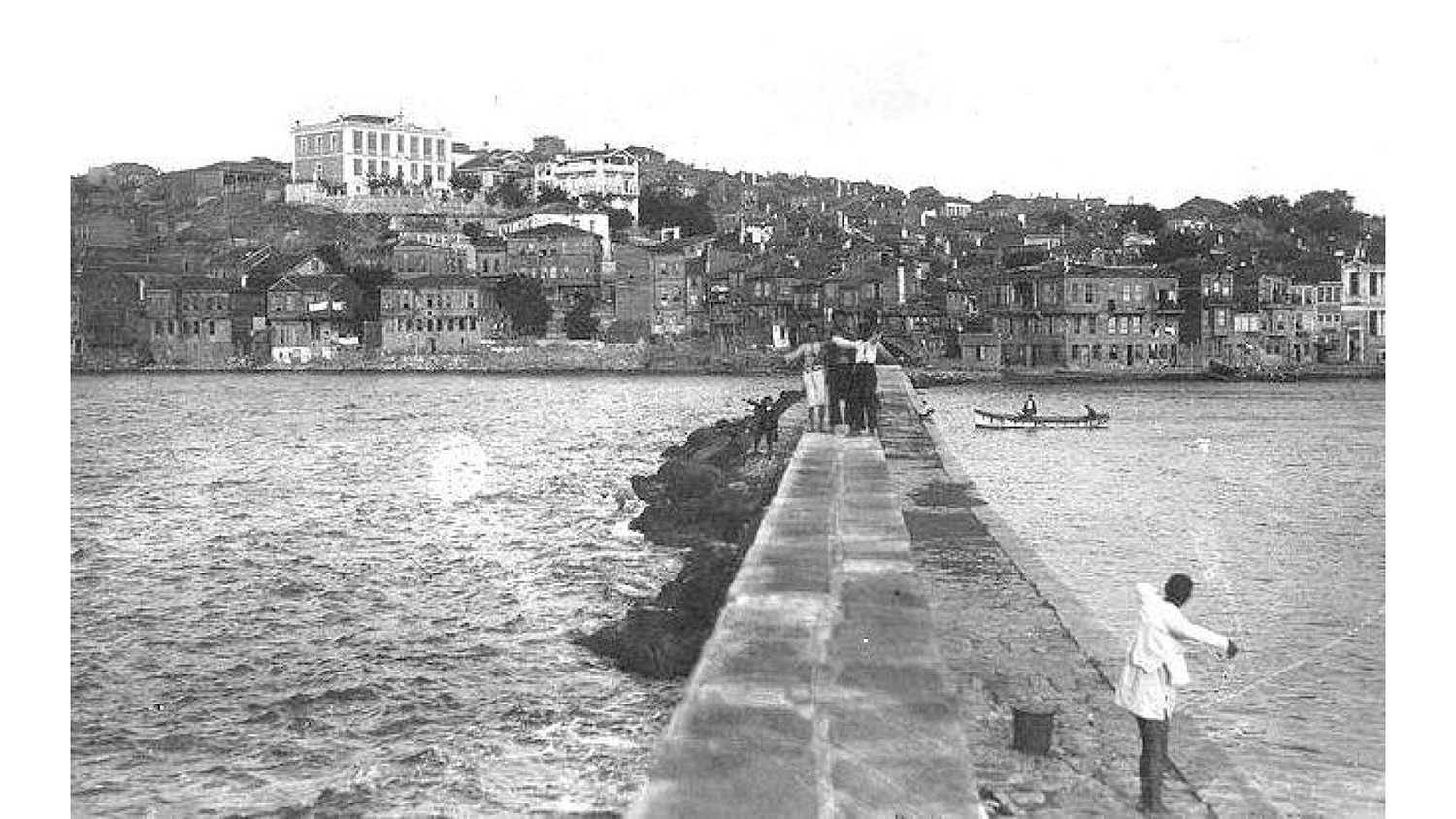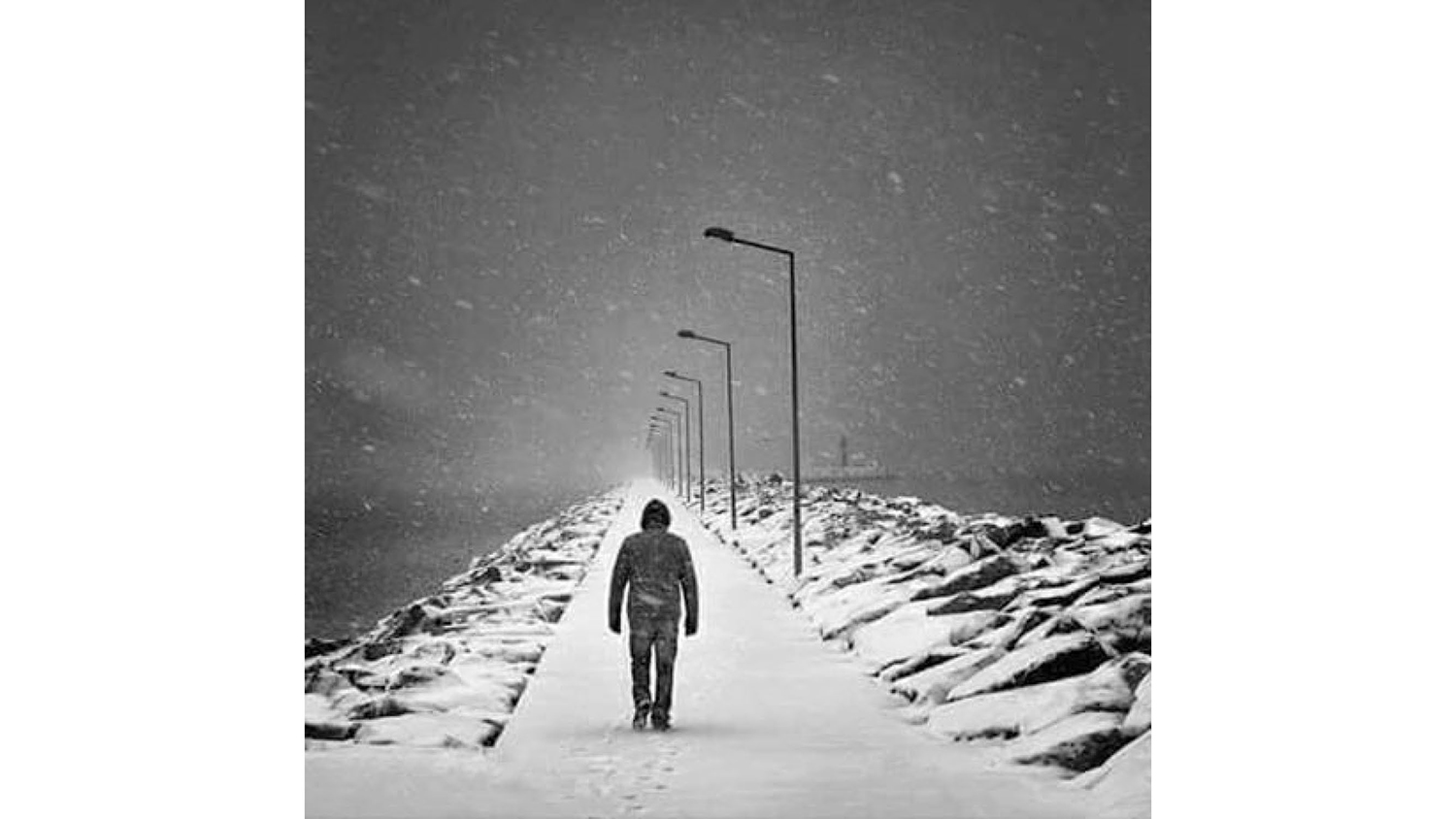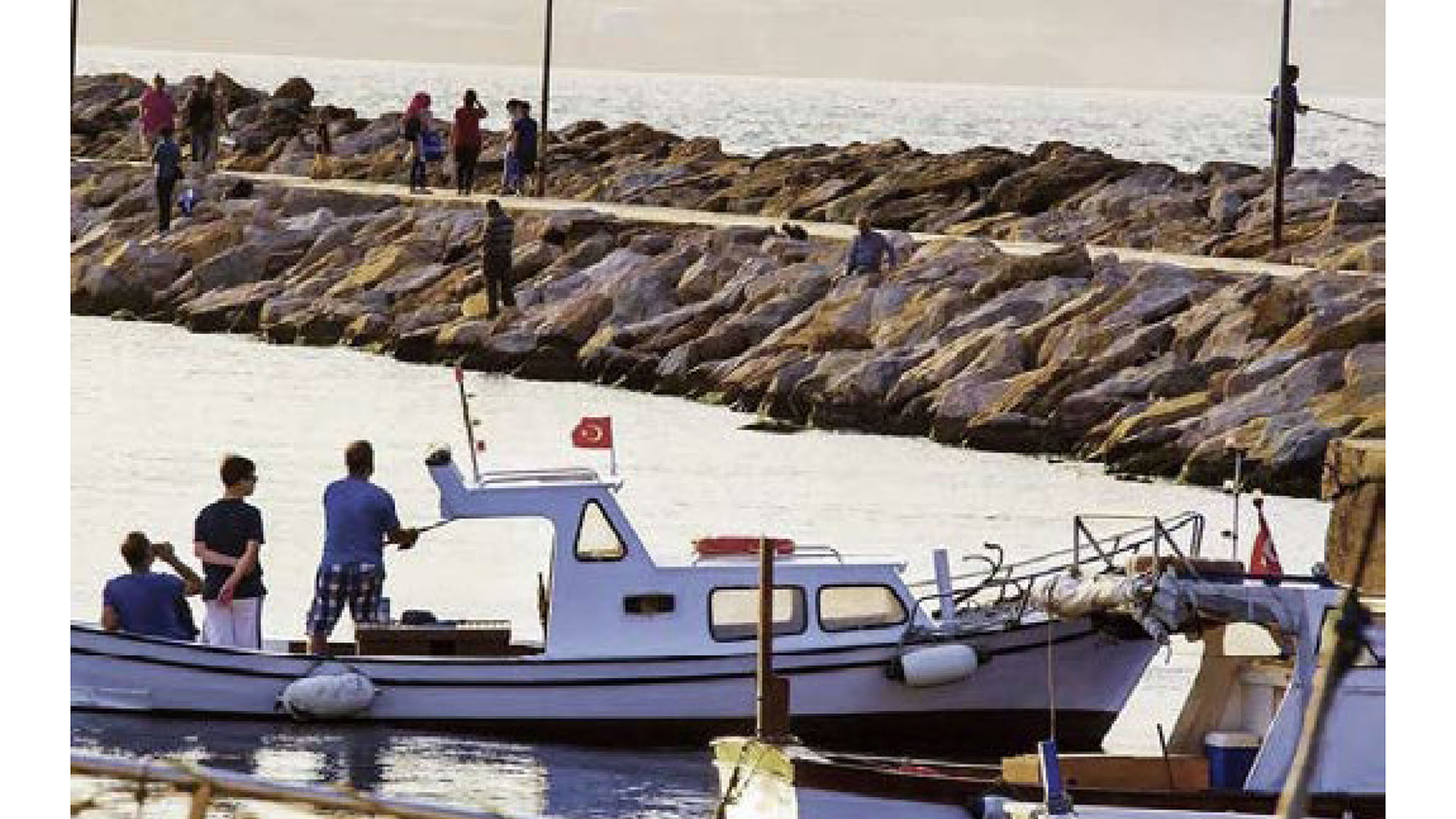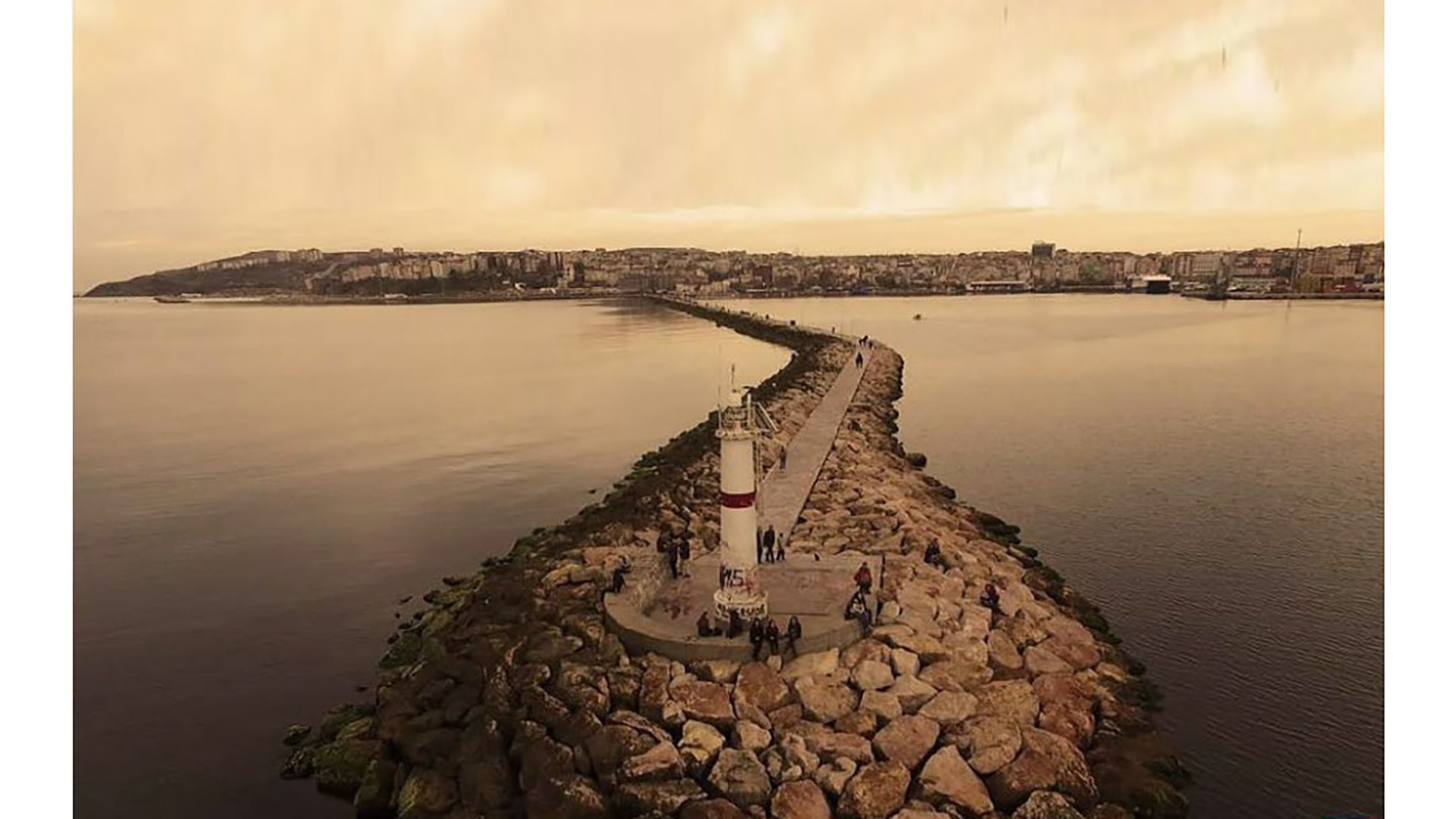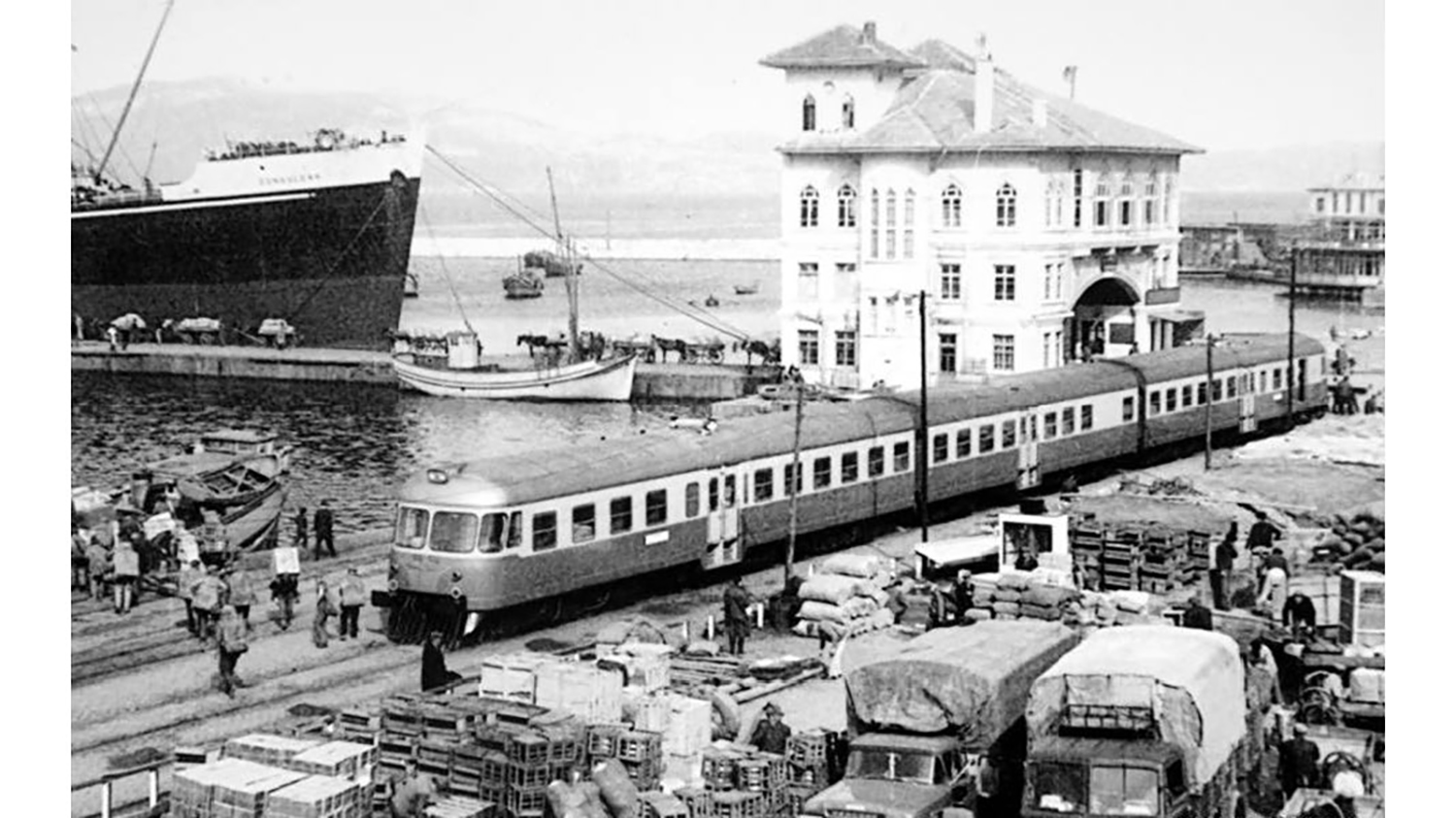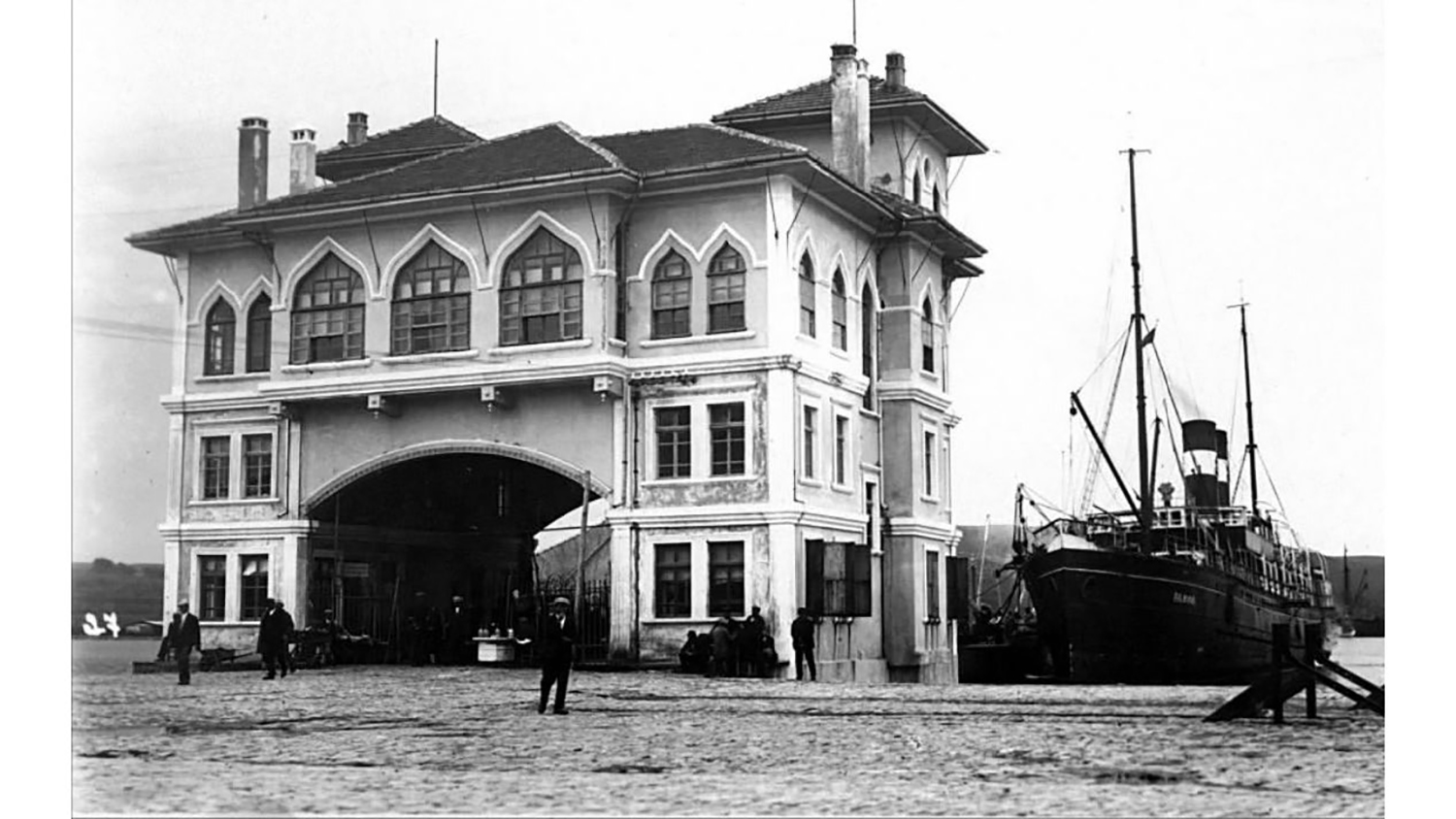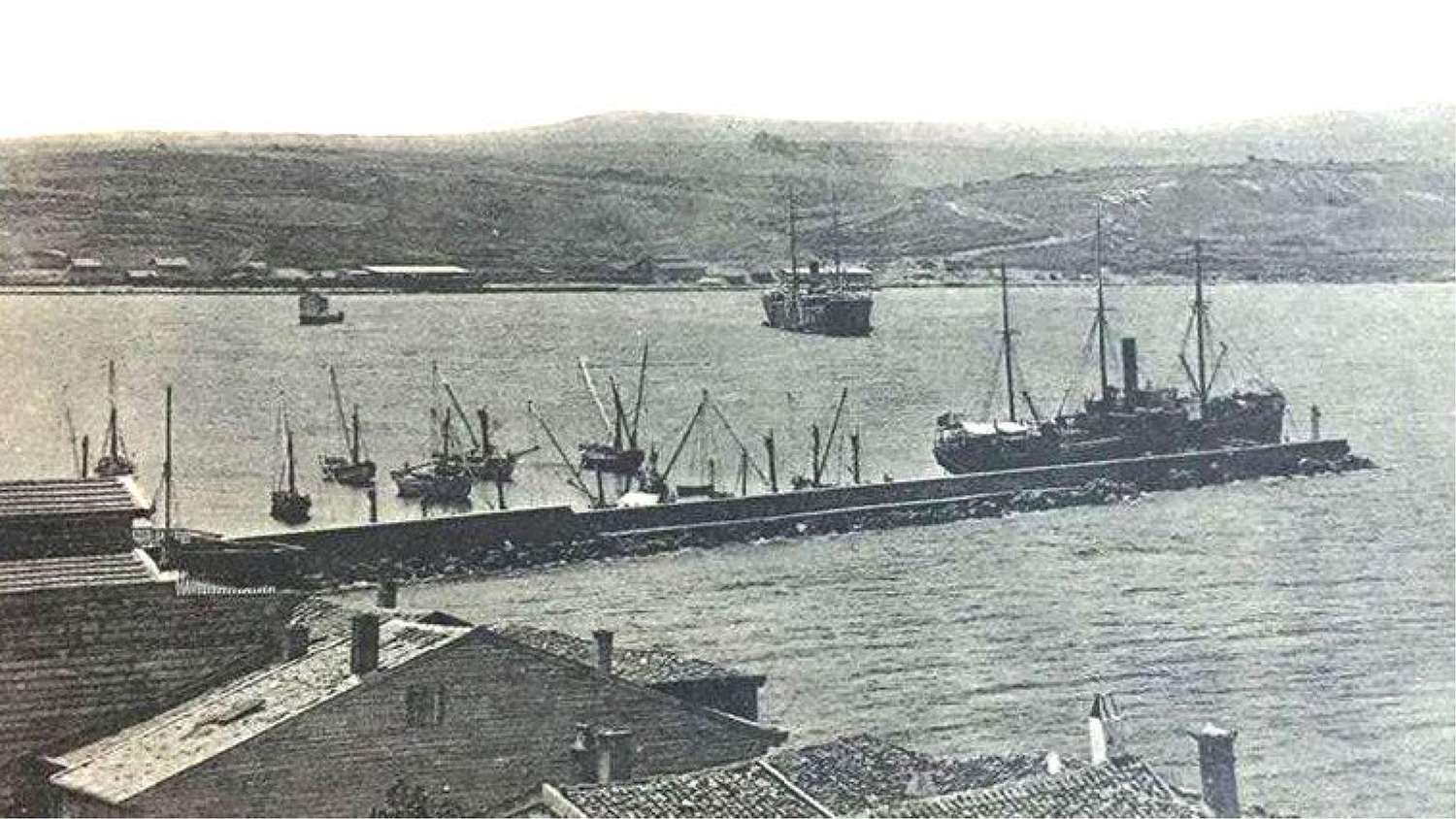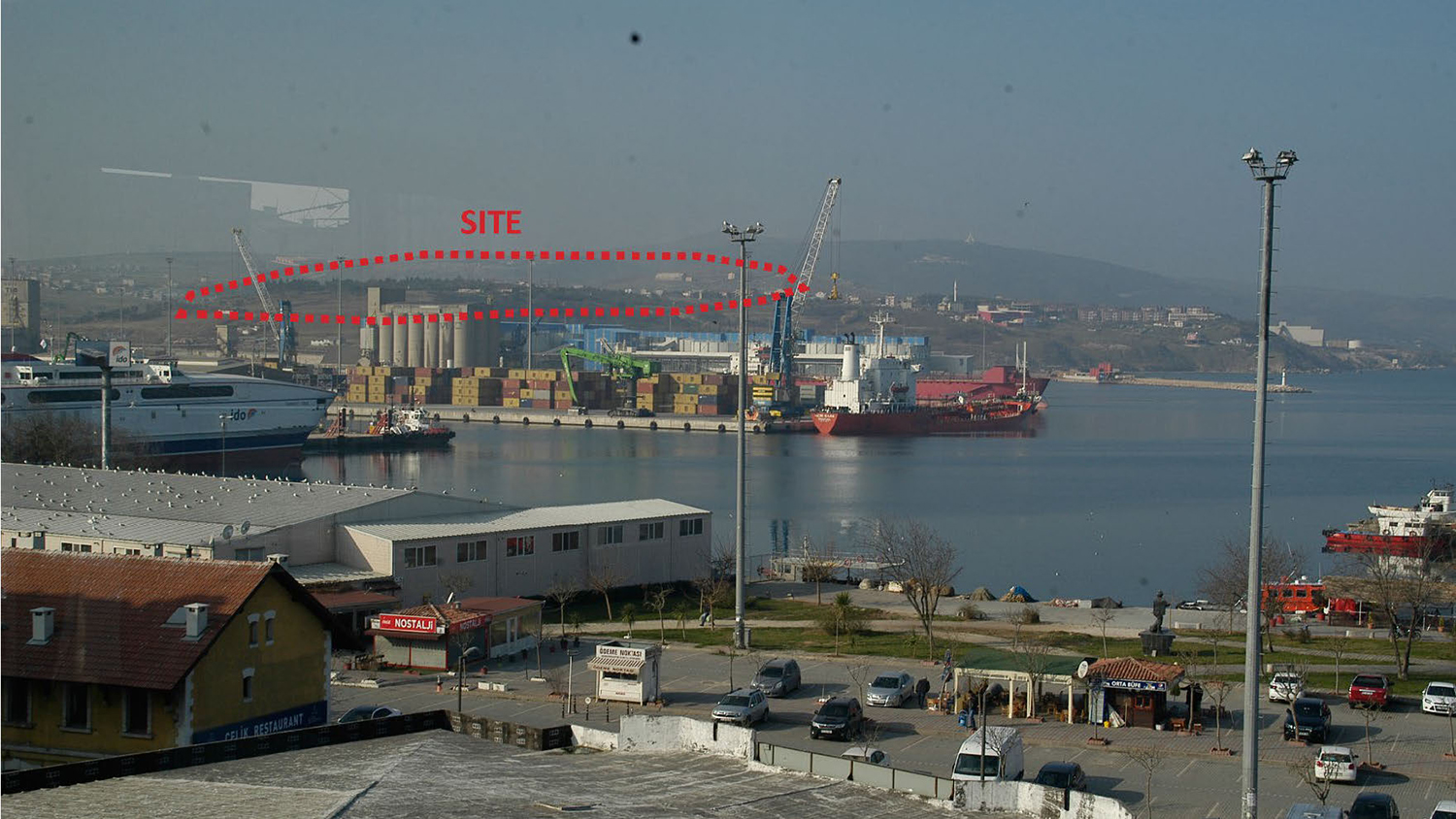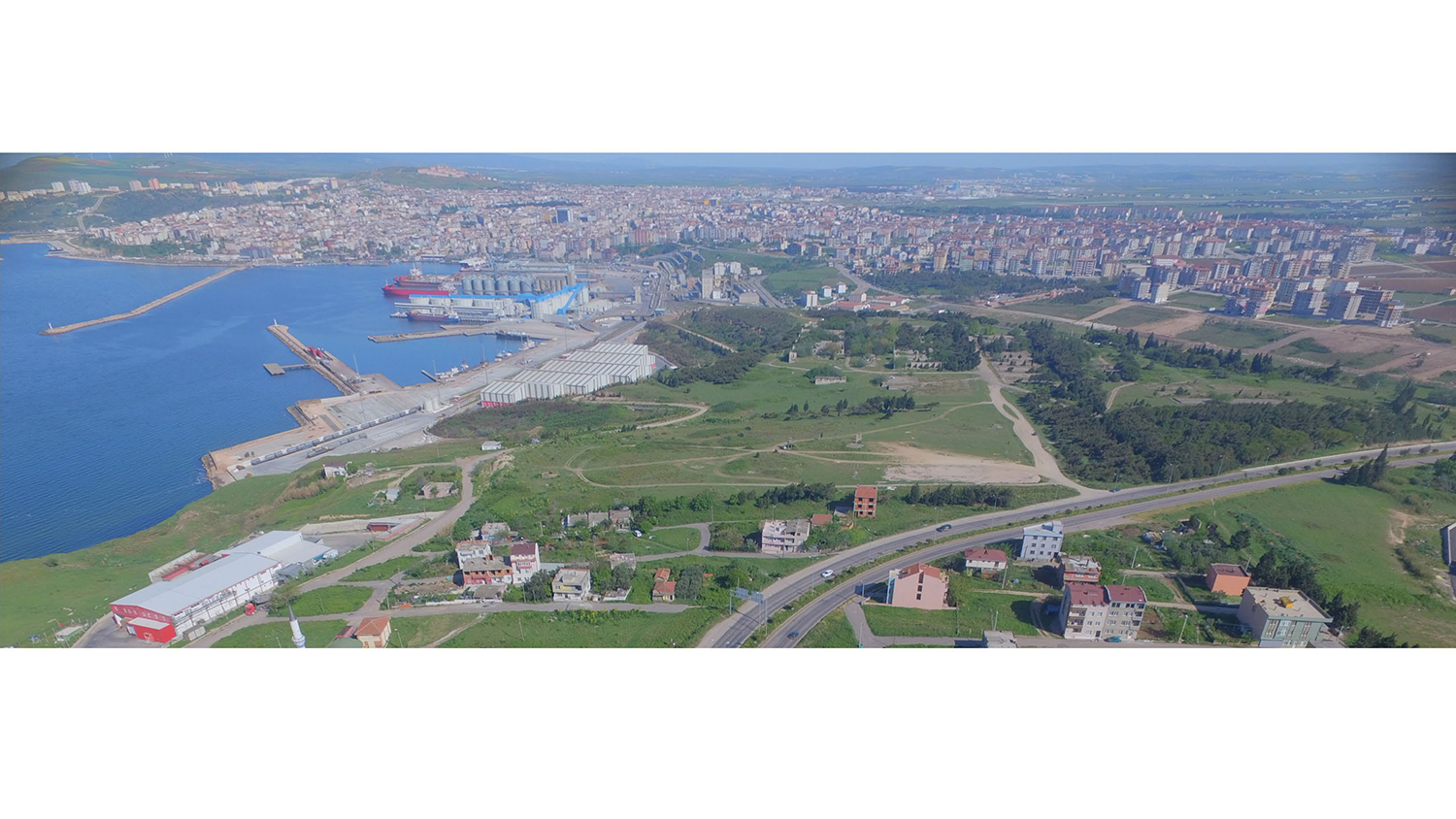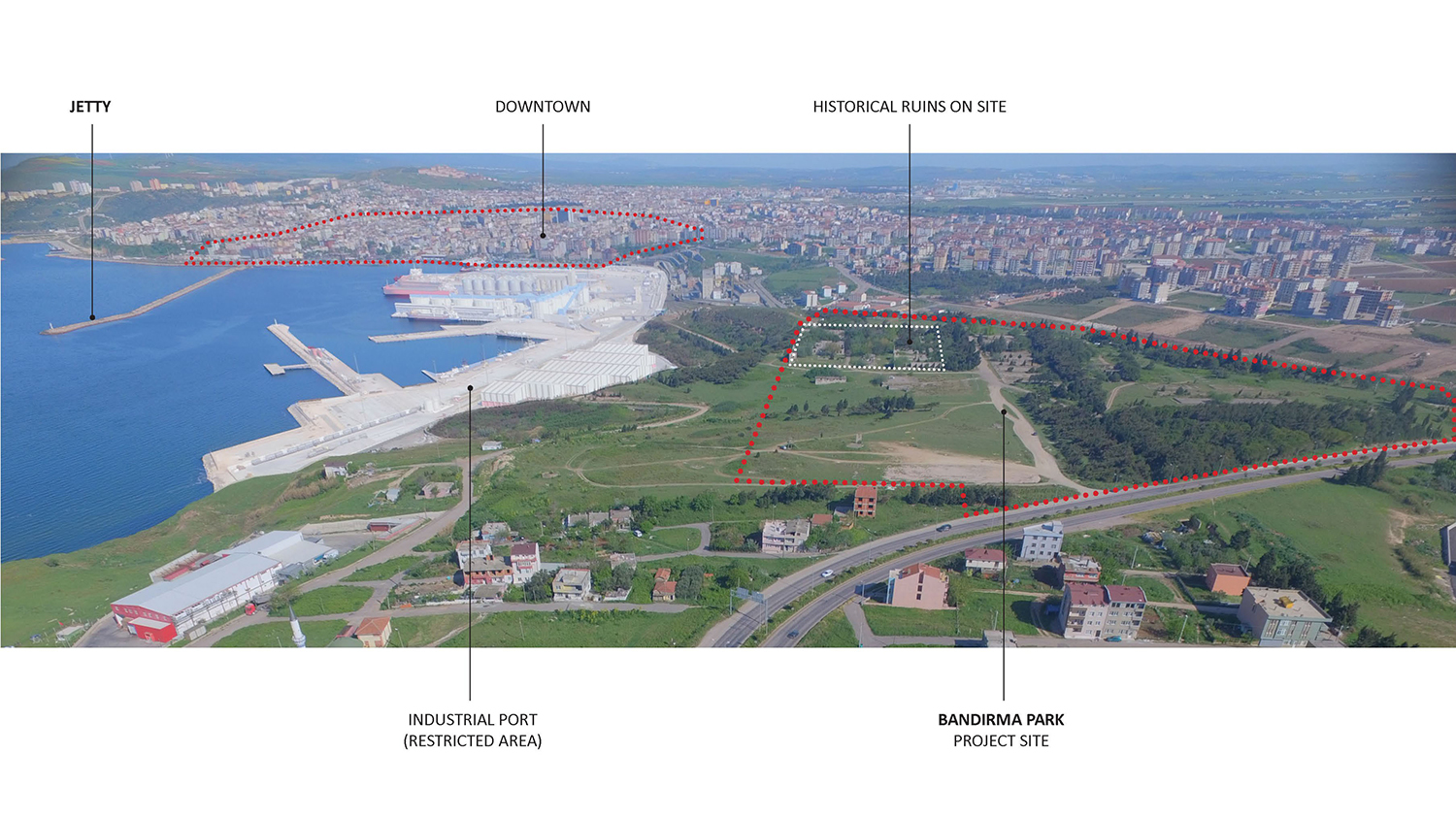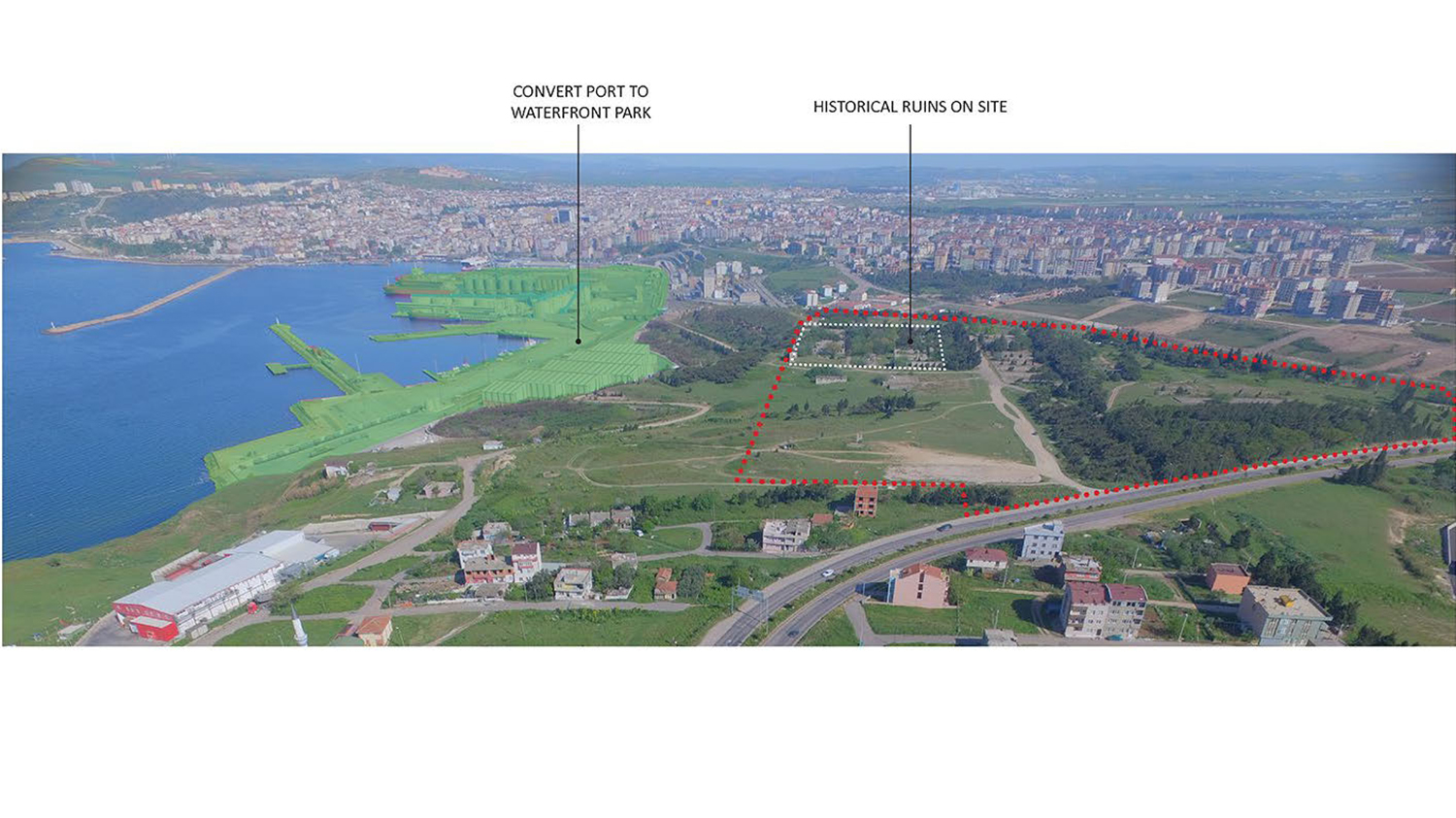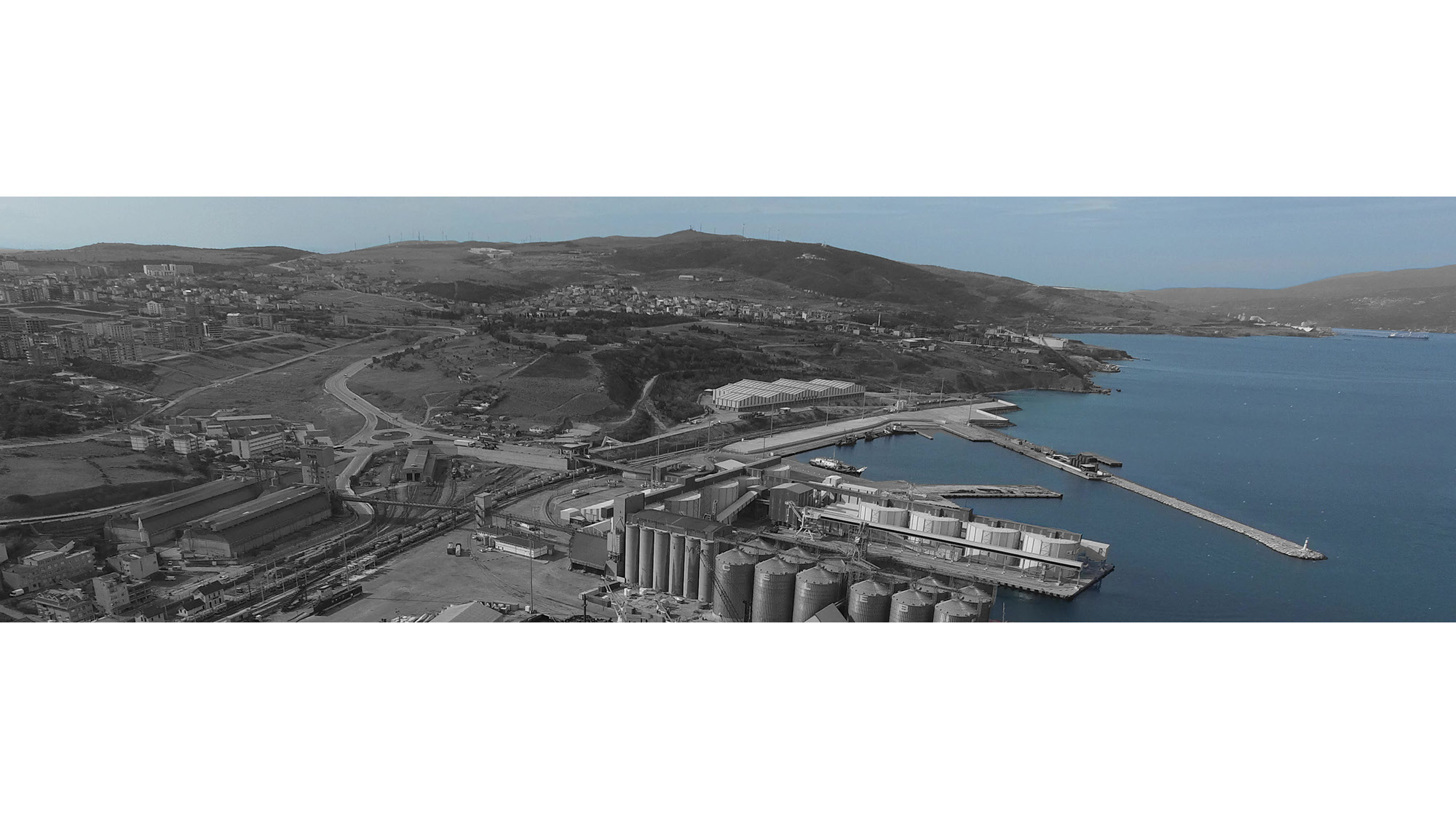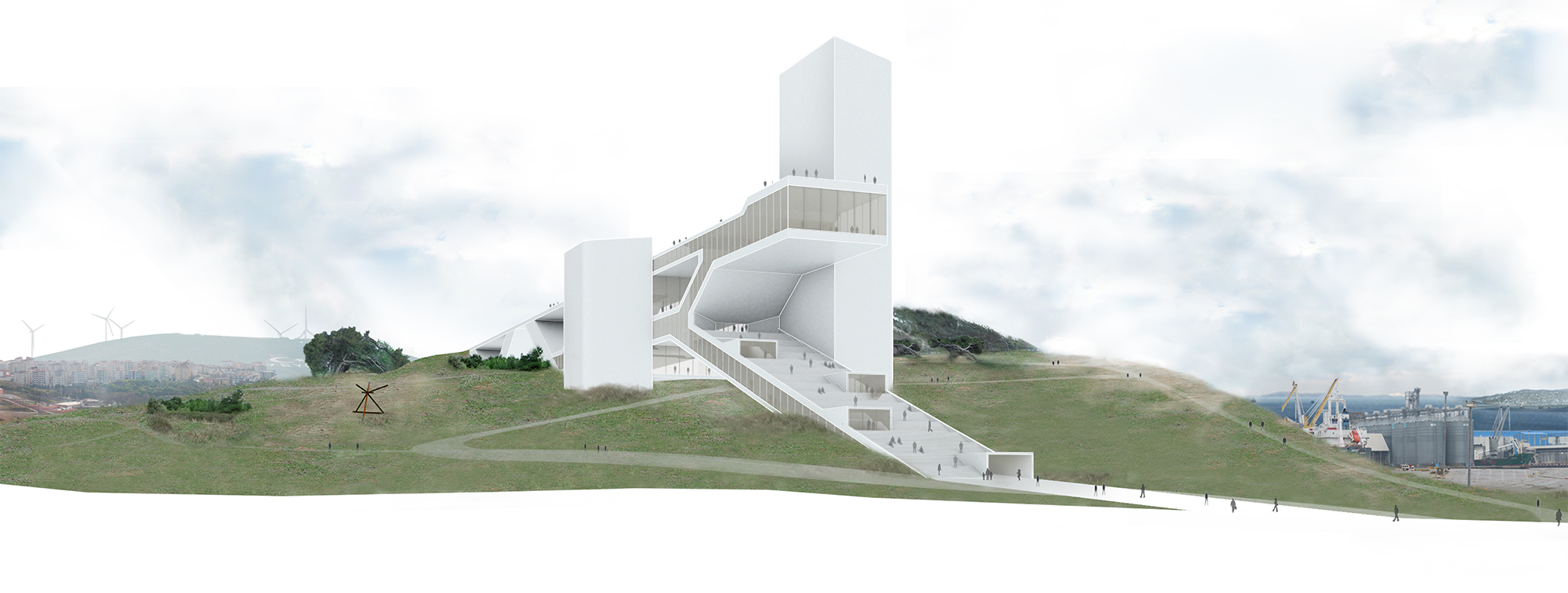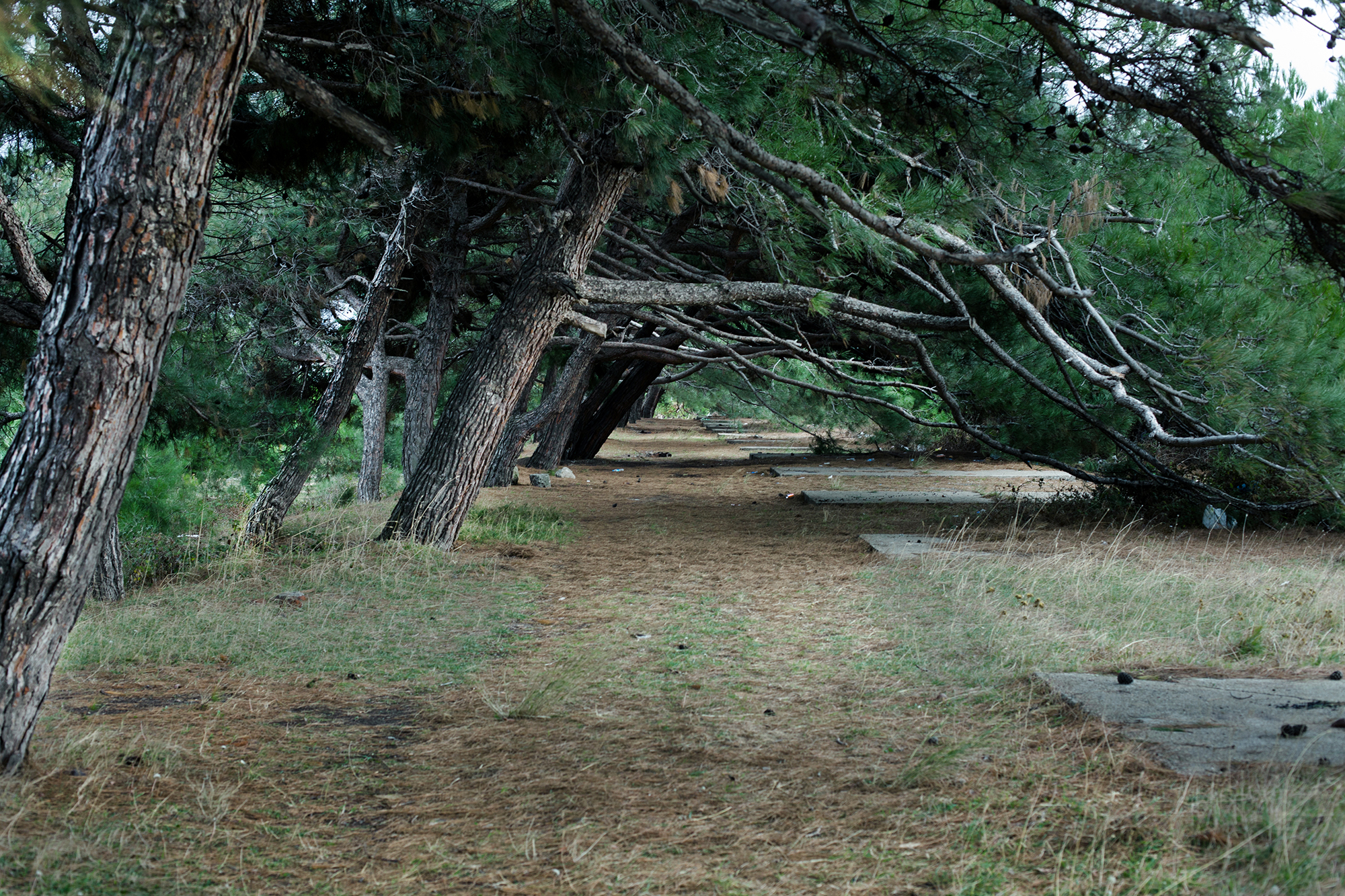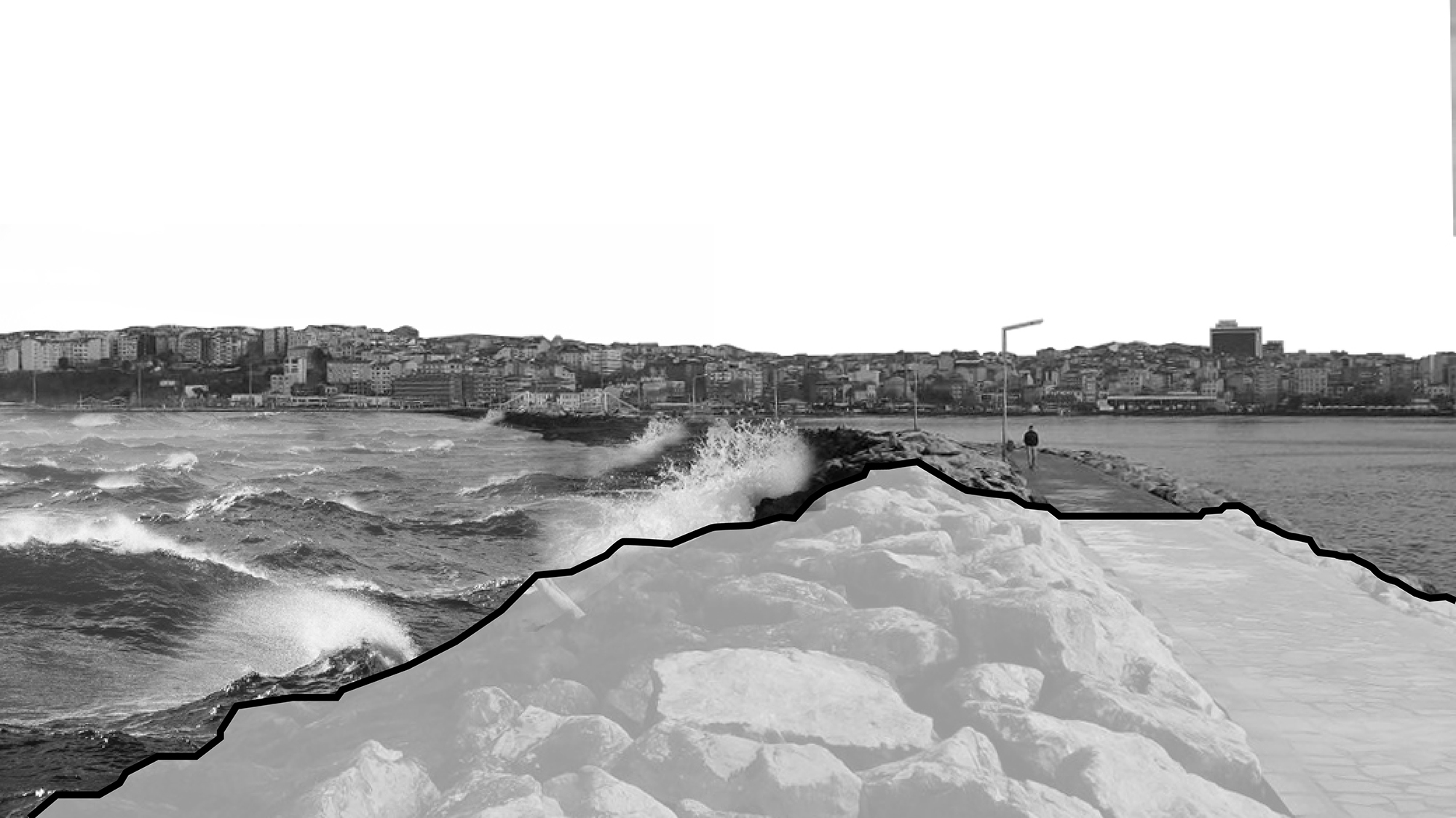The jetty was always there…
“You can see it even in the photographs from 1920s. You can see people on it – walking, fishing, enjoying the waterfront. I remember walking back and forth, and again, and again, like a pendulum.
I grew up on the jetty. Maybe because of that, I always like linear public spaces – it does not give you any choices.
Bandırma met at the jetty – Uncle Mehmet who made the best grilled cheese sandwiches in town; next door neighbors you stayed with when your parents were away; the beautiful girl you secretly loved; the beautiful girl’s parents; the school bully you would rather avoid; the retired old man who liked to fish; the retired old lady who liked to walk; soldiers from the military base dressed in civilian clothes enjoying their Sundays off; families you knew, friends you hung out with, random strangers… We all walked back and forth the same narrow path stretching a kilometer towards the Marmara Sea.
It was the public space in Bandırma. When you were not walking, you sat on its rocks – I had a favorite one, most people had one. Other than the odd sunflower stand closer to the shore, on the jetty, there was no retail so to speak- no money to be made, no commerce – it was pure contemplation, it was pure dialogue – sometimes with yourself and often times with others.
Arriving to Bandirma
You took the train from Izmir, not the intercity bus. You knew you arrived when you pass through the tunnel that was the gateway to the harbor expanding in front of you. The old train station you see in the historical pictures was the library when I grew up. The station itself was a shed along the water, next to the fish market. You smelled the fish as you waited for the train to arrive. However, the best way to arrive Bandırma was by ferry from Istanbul. It took six hours back then. You sat on the deck leaving Istanbul behind, towards a seemingly endless voyage in the Marmara Sea. First the islands greeted you, then you saw the shores of the Kapıdağ peninsula. My favorite moment came as the ferry was entering the harbor. The entire kilometer of the jetty laid in front of you. I would lean out the deck, almost trying to reach out to it. You saw people on it – there was always people on it. You were looking at it from the sea, instead of being on it. The jetty stretched endlessly. You were home.
An unusual building
The Port Building was built in 1926. It was the gateway to Bandırma. Quite remarkable I thought, for a small town, shortly after the Great War, to make an architectural statement. All the national day celebrations, festivals happened at the town-square in front of it. When I was growing up, it was not functioning as the port building anymore, the new port had already moved away. It was a wedding hall – my sister got married there. Many years later, underneath it, my dad told me he had cancer. Maybe he felt the circumstances asked for a dramatic backdrop. I always found the heroic architectural statement uplifting even when the circumstances sometimes were not.
A town in motion
Bandırma was never the idyllic fishing village. There were a few of those nestled in the Kapıdağ Peninsula. Bandırma always had the industry, had the factories with smokestacks, had the port, had the regular screaming noise of the military fighter jets, it had its own hustle and bustle. It had the energy. Growing up, I always felt like everything went through Bandırma. Trains, boats, people…Maybe, that’s why I left too.”*
*from the memoir of the architect
 Image © Efficiency Lab for Architecture
Image © Efficiency Lab for Architecture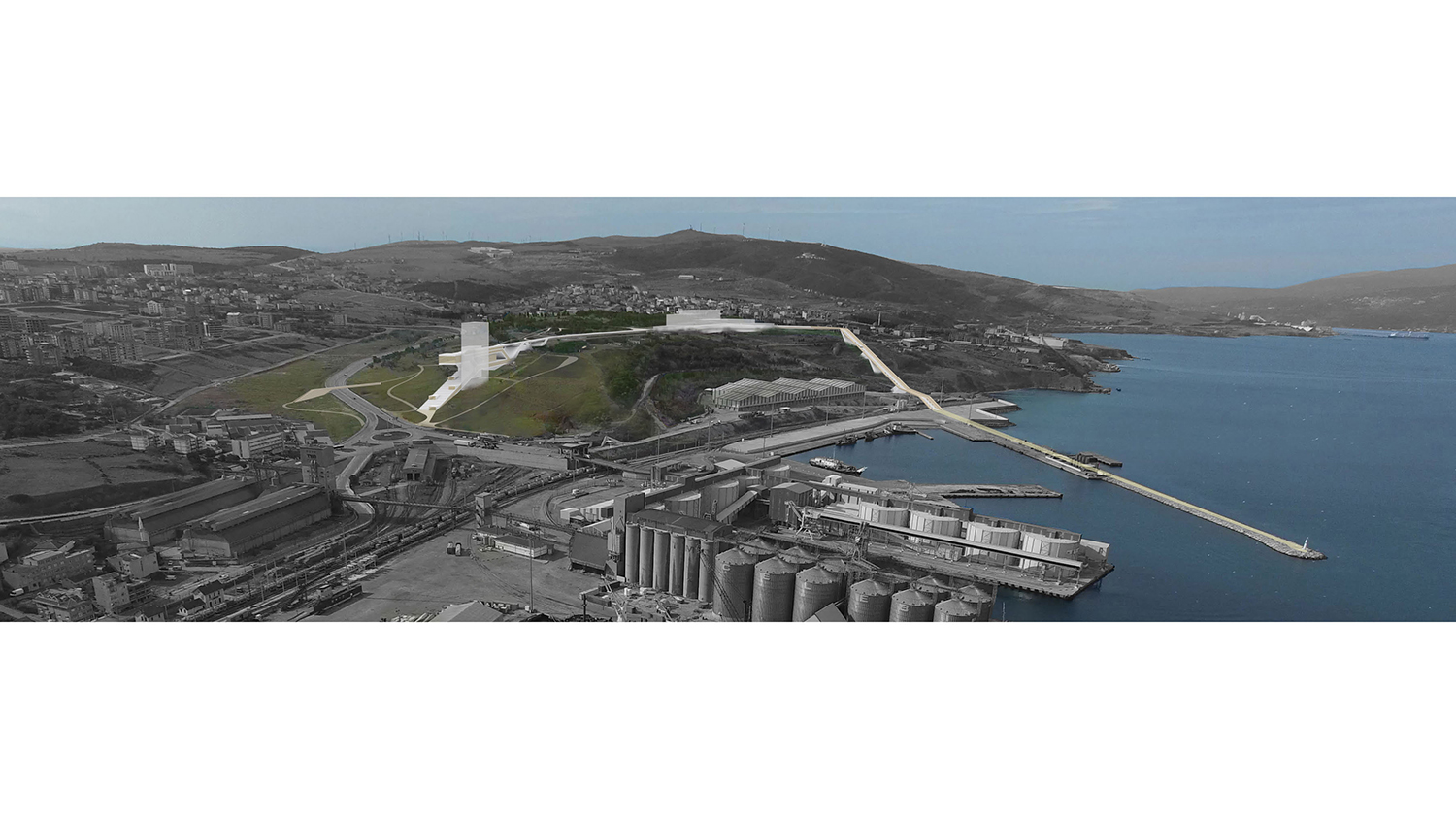 Image © Efficiency Lab for Architecture
Image © Efficiency Lab for Architecture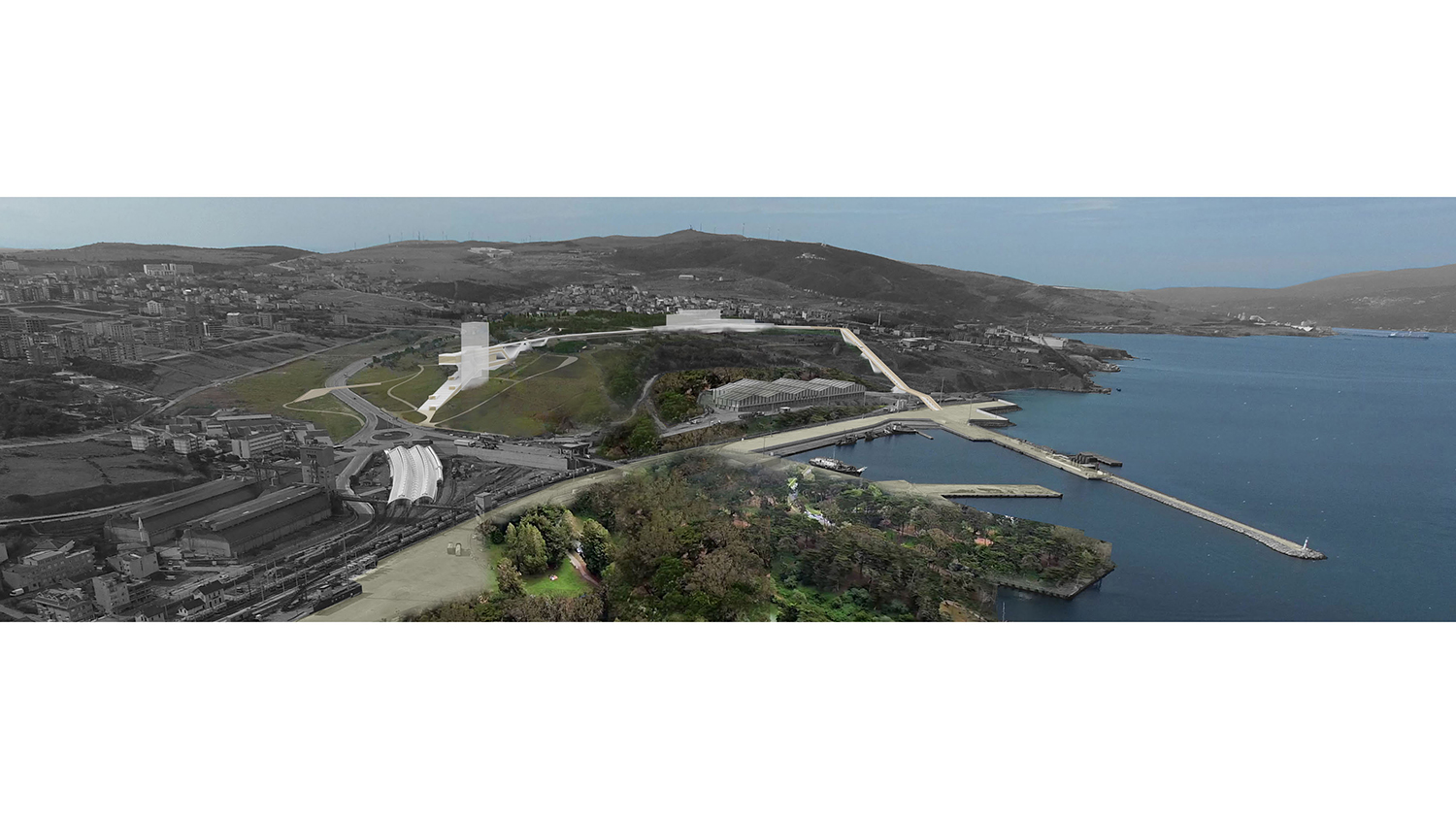 Image © Efficiency Lab for Architecture
Image © Efficiency Lab for ArchitectureThe project is conceived as a jetty, a linear public space creating a series of open, semi-open and enclosed spaces, connecting program components and park areas.
The Jetty creates vantage points to enjoy the panoramic views of the harbor and the peninsula, and to experience the ruins and the unique landscape of the site.
The project stretches beyond the site boundaries, through the future housing development to connect to the existing jetty within the industrial port which is currently inaccessible to the public. This seems feasible via an elevated connection without effecting the operations of the industrial port.
The project proposes that at a future date, the existing port which cuts public access to the waterfront be relocated to the planned industrial port site, and the current site be converted to a waterfront park. This will create a continuity of public spaces between the waterfront and the new Bandırma Park. After the relocation of the industrial port, the project proposes the creation of a new train station for high-speed trains at the current cargo train station location to create a seamless connection of Bandırma Park to the surrounding cities.
Inspired by the existing jetty at the northern boundary of the port, which is heavily used as a public space, a three dimensional linear space is conceived at a constant elevation hovering 6 meters over the highest elevation of the park, as a pedestrian promenade.
The project on the eastern end terminates with a dramatic public space looking towards the city. A grand staircase with cascading terraces forms a major arrival point from downtown, attracting pedestrian flow into the park. The terminus point of the Jetty, is anchored by a Community Center, an observation deck, and a design institute.
The windswept trees in Bandırma Park.
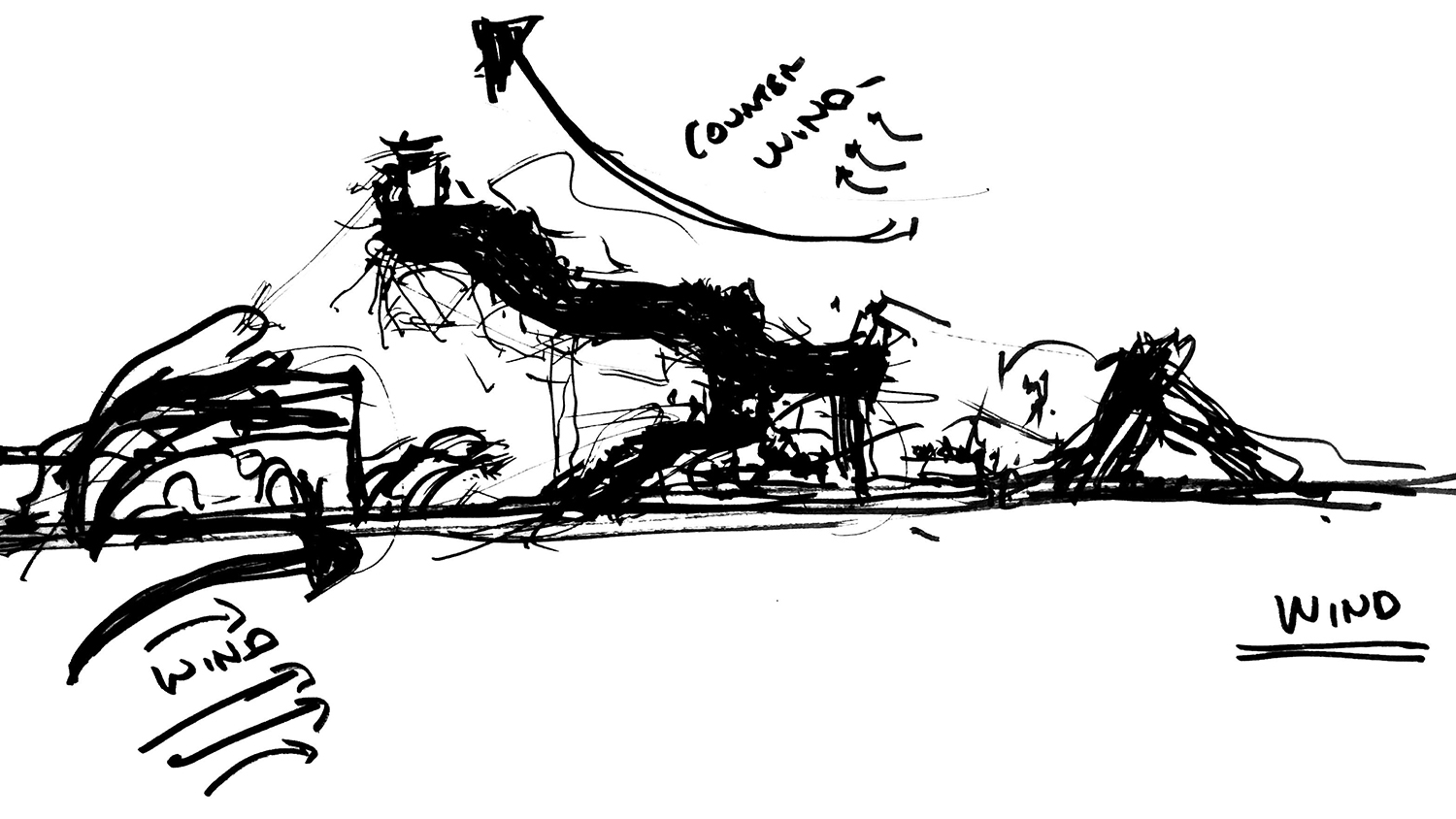 Image © Efficiency Lab for Architecture
Image © Efficiency Lab for Architecture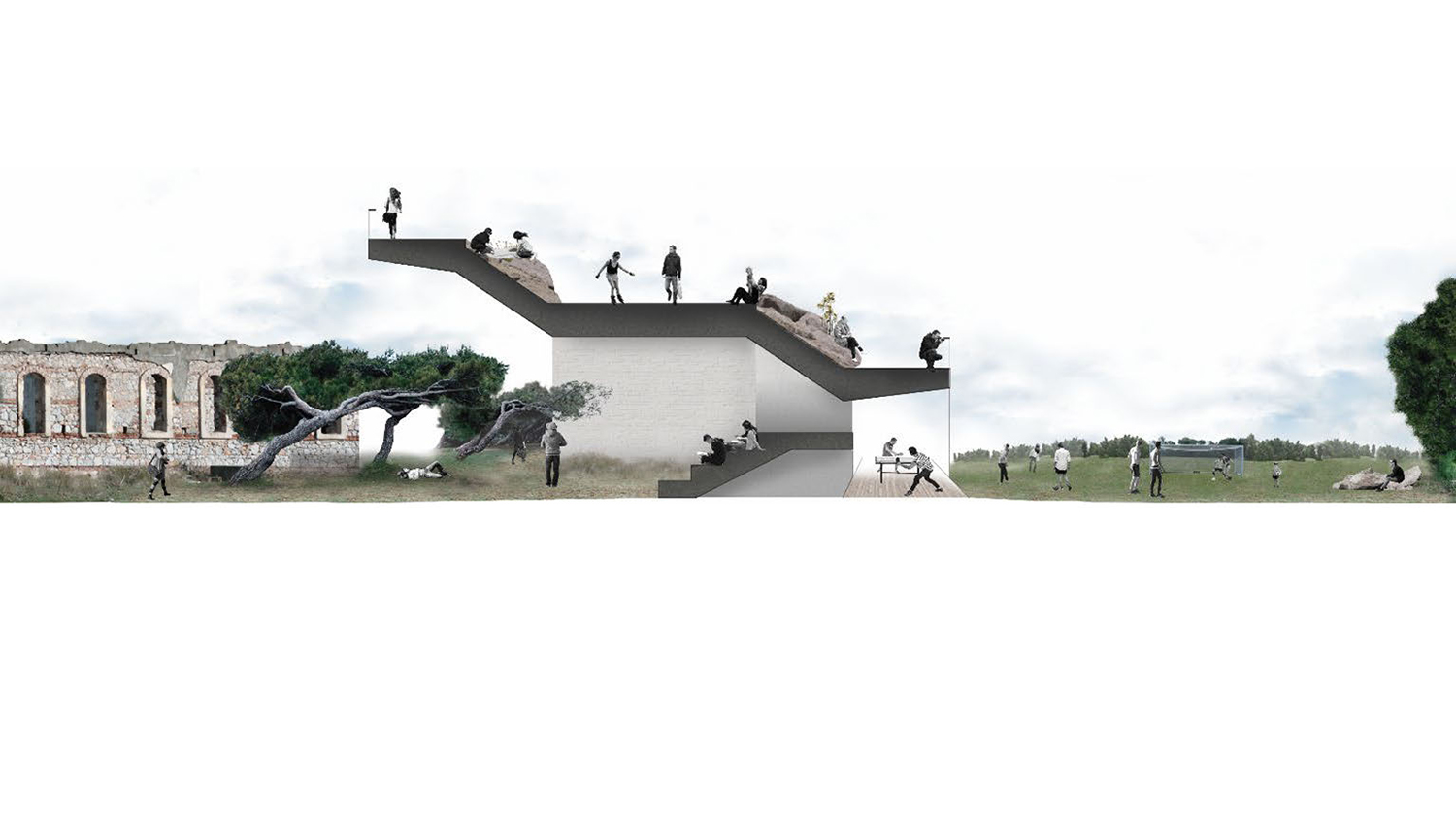 Image © Efficiency Lab for Architecture
Image © Efficiency Lab for Architecture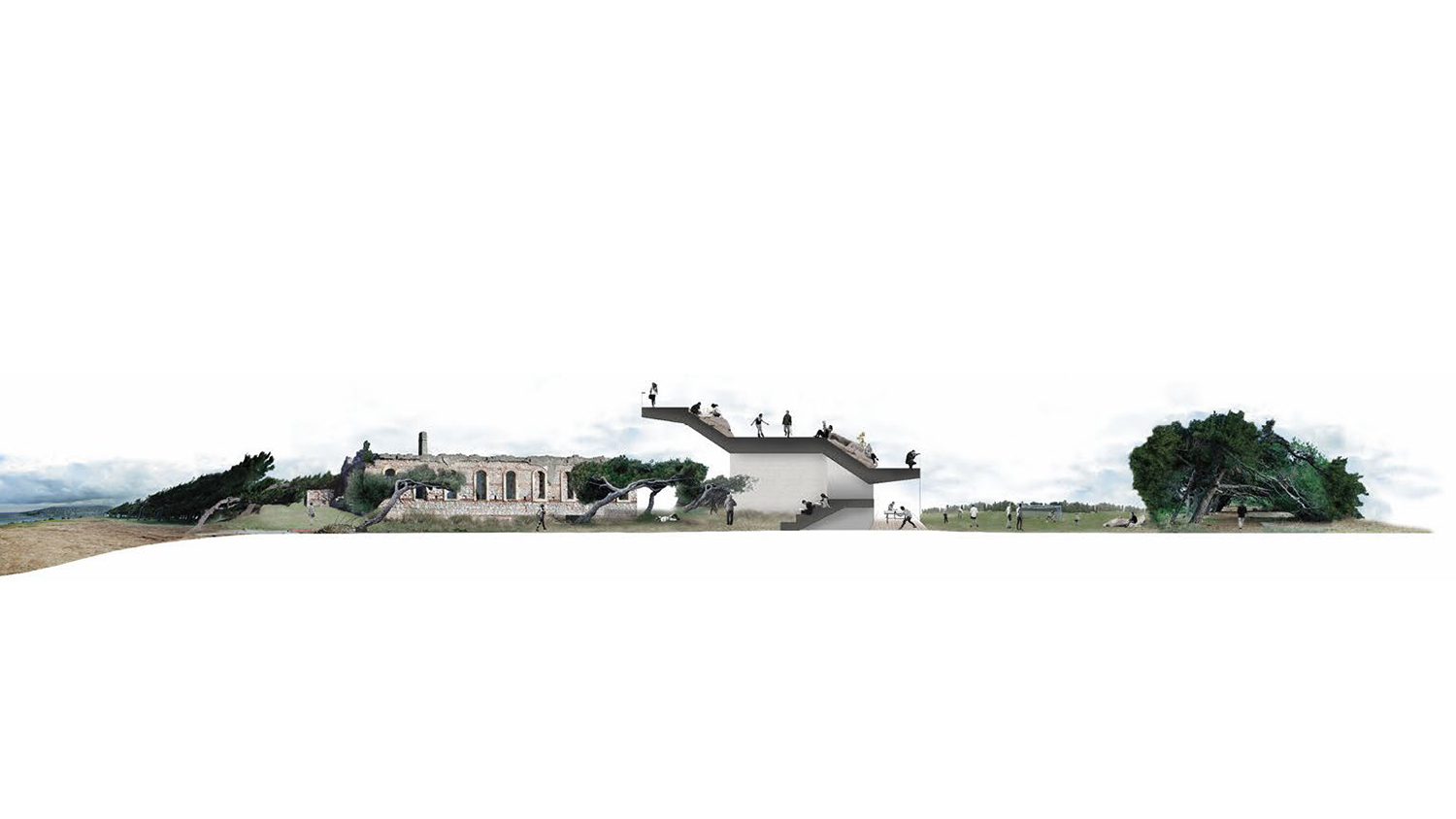 Image © Efficiency Lab for Architecture
Image © Efficiency Lab for Architecture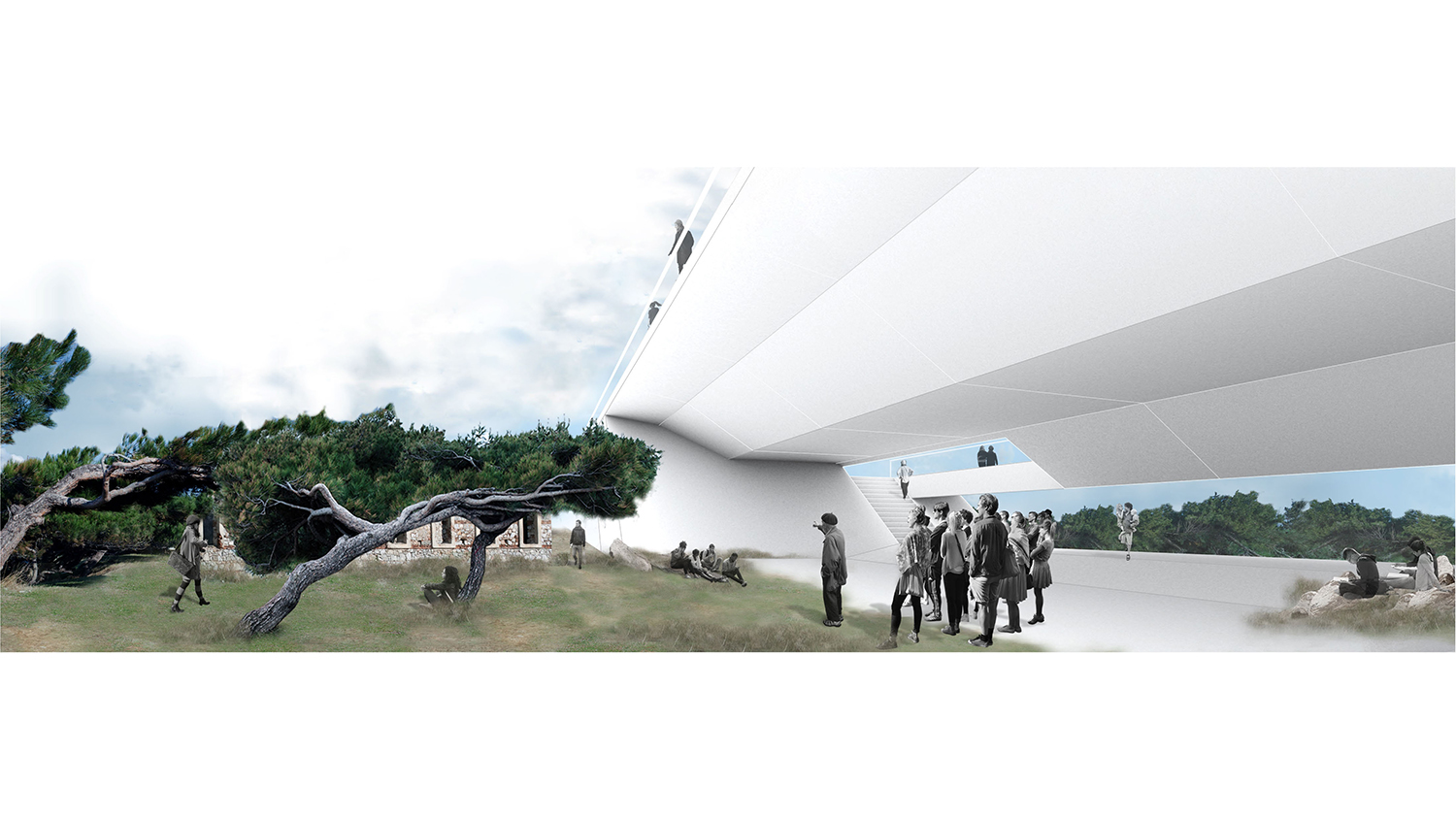 Image © Efficiency Lab for Architecture
Image © Efficiency Lab for Architecture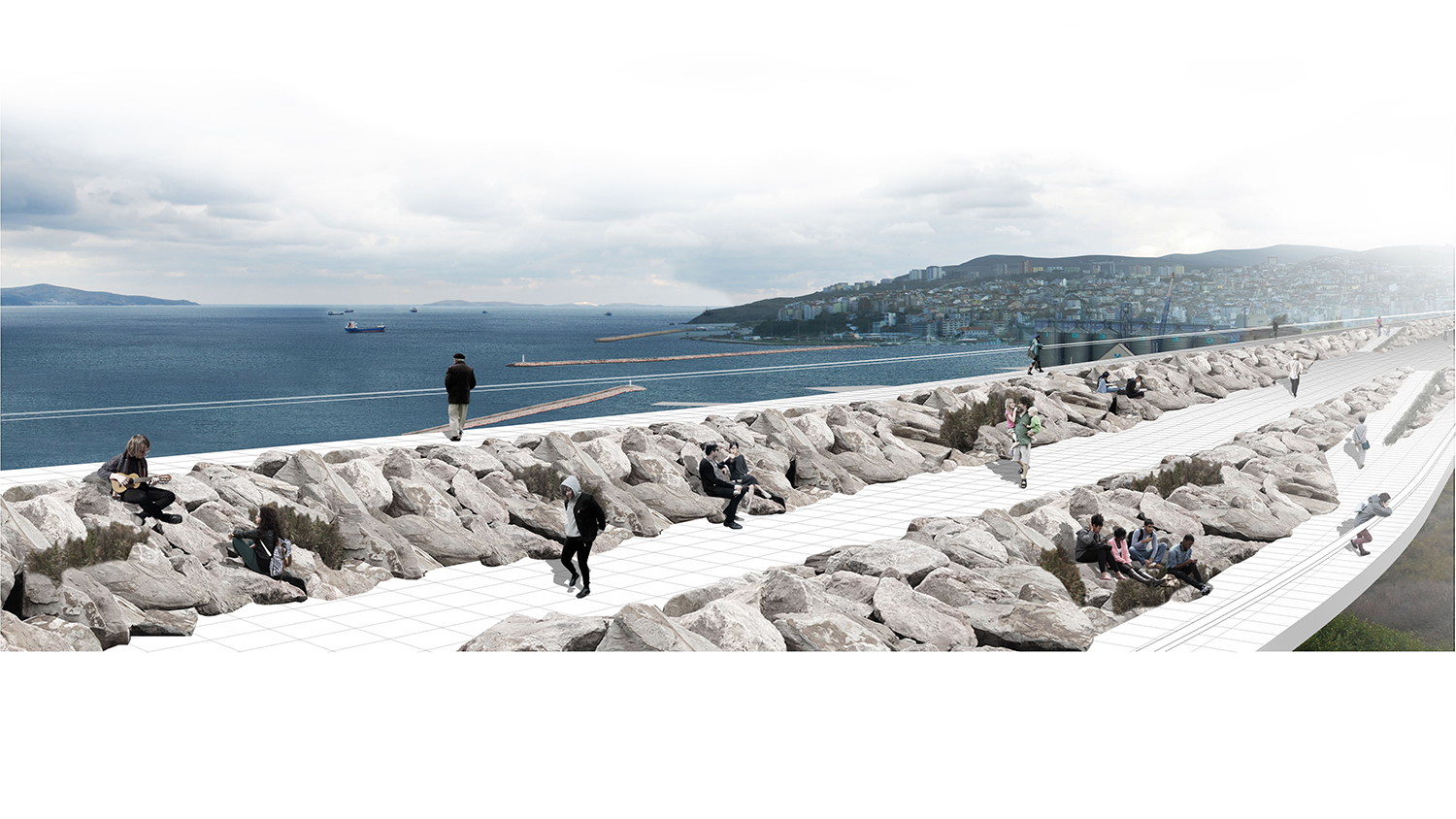 Image © Efficiency Lab for Architecture
Image © Efficiency Lab for ArchitectureThe form and location of the existing jetty is shaped by the prominent winds to protect the harbor from the waves.
The cross section shows a higher elevation of rocks on the windward side, and a lower elevation of rocks on the leeward side. This cross section protects the pedestrian walkway from the high winds and the water splashing over as the waves crash to the Jetty.
The proposed jetty park follows a similar sectional profile, creating a higher profile toward the windward site that cascades towards the leeward side, creating protected paths and seating areas.
Furthermore, the proposed jetty creates leeward zones where the active sports fields, the great lawn, and the sculpture park are located to offer a comfortable environment protected from the strong winds.
The underside of the jetty is utilized to create spaces for flexible programming such as performance spaces and active sports areas.
The panoramic view of the Bandirma Bay from the Jetty.
AWARDS: Honorable Mention from the International Bandirma Park Design Competition jury led by Odile Decq.
